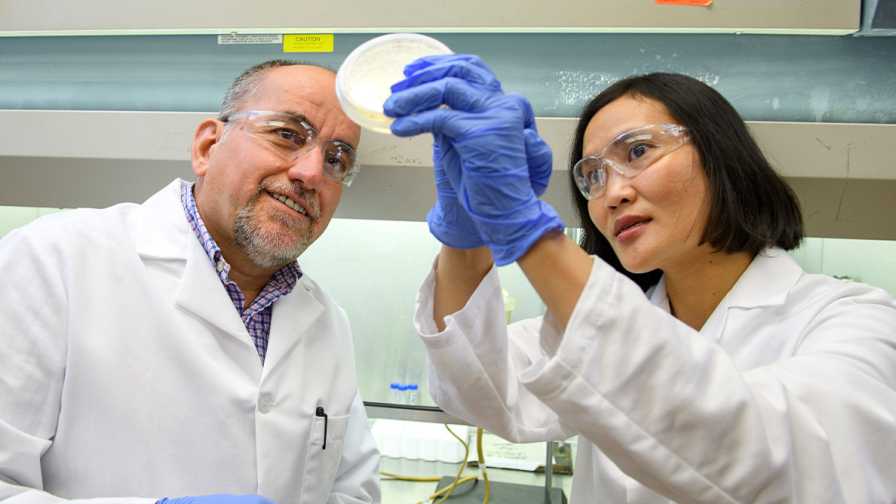Big Breakthrough in the Fight Against Citrus Greening

Washington State University scientists Phuc Ha and Haluk Beyenal are part of a research team that has figured out how to culture in a lab the bacteria that causes citrus greening.
Photo courtesy of Washington State University
A major obstacle in the fight against citrus greening has been the inability of researchers to culture the bacteria that causes the disease in the lab. Scientists from Washington State University (WSU) have overcome that challenge.
Being able to grow the elusive and poorly understood bacterium, Candidatus Liberibacter asiaticus (CLas), will make it easier for researchers to find treatments for the disease that has destroyed millions of acres of orange, grapefruit, and lemon groves around the world and has devastated the citrus industry in Florida.
WSU was selected three years ago for a $2 million USDA grant to study the bacteria, in part, because Washington has no citrus industry.
A critical step in coming up with weapons to fight the disease is being able to study it in the lab, but the CLas bacterium is notoriously difficult to grow. With a small genome, CLas is thought to depend on very specific nutrient availability and possibly compounds secreted by other nearby bacteria.
When researchers used a traditional rich media that they typically use for growing bacteria, they mostly grew bacteria other than CLas. So, in order to conduct research, scientists have had to get bacterial samples directly from the trees themselves or from the insects that spread it, which is time-consuming and cumbersome.
Trying to conduct experiments also has been difficult because, unlike neat lab cultures, bacterial samples gathered from a sick tree vary, depending on where and when the sample is gathered and the level of infection.
Without being able to grow the bacteria in a lab, researchers have been unable to even absolutely confirm that the bacteria, in fact, causes the disease.
In their paper, the researchers for the first time successfully established and maintained CLas bacterial cultures outside of its host.
Using infected citrus tissue as their starting point, the researchers developed a biofilm — a kind of bacterial city that allows a variety of bacteria to thrive. Instead of a rich growth medium that would crowd out the CLas, the researchers severely limited the growth of partner bacteria and created a medium with the specific nutrients, acidity, incubation temperatures, and oxygen levels that are optimal for CLas. The CLas thrived – an important first step.
“We were really excited,” said Haluk Beyenal, a Paul Hohenschuh Professor in the Gene and Linda Voiland School of Chemical Engineering and Bioengineering, “but then we wondered if we could re-grow it.”
The researchers were able to transfer the orange-colored culture and grow new cultures in their biofilm reactors, which they have maintained for more than two years.
“We can do this for as long as we want,” said Beyenal.
Beyenal’s group is now working to purify the culture, which will further help researchers to study it. They also arealso developing genetic-based methods to understand and mitigate the spread of the disease.
Joining Beyenal, the research team includes, Phuc Ha, postdoctoral research associate, David Gang and Ruifeng He, from WSU’s Institute of Biological Chemistry, Anders Omsland, from the Paul G. Allen School for Global Animal Health, as well as scientists from the University of Florida and University of Arizona, report on their work in the journal, Biofilm.










